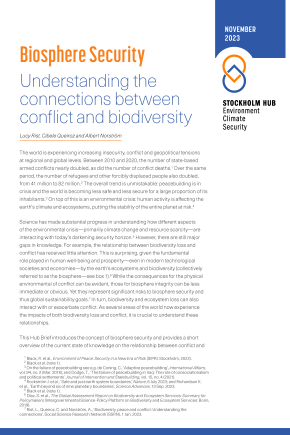Biosphere Security: Understanding the Connections between Conflict and Biodiversity
Worsening security, regionally and globally, presents one layer of risks to peace. A second, possibly more significant layer, is the unfolding environmental crisis. While substantial progress has been made in understanding how certain aspects of the environmental crisis—such as climate change and resource scarcity, interact with increasing insecurity—there are still major gaps in knowledge.
Human well-being depends on the biosphere—the ecosystems and biodiversity that sustain life and human civilization on earth. It has long been understood that armed conflict causes significant environmental damage and biodiversity loss. Equally, loss of biodiversity can exacerbate conflict: it can contribute to livelihood insecurity, lead to maladaptive migration and add to pressures on natural resources, possibly resulting in violence.
The interconnected nature of the security and biodiversity crises represents potential opportunities for tackling both issues in tandem. This paper outlines a few broad, but critical, starting points in work towards a more comprehensive biosphere security research agenda. They require the engagement of multiple academic disciplines and non-academic actors and must be oriented towards, and supported by, the policy world.

